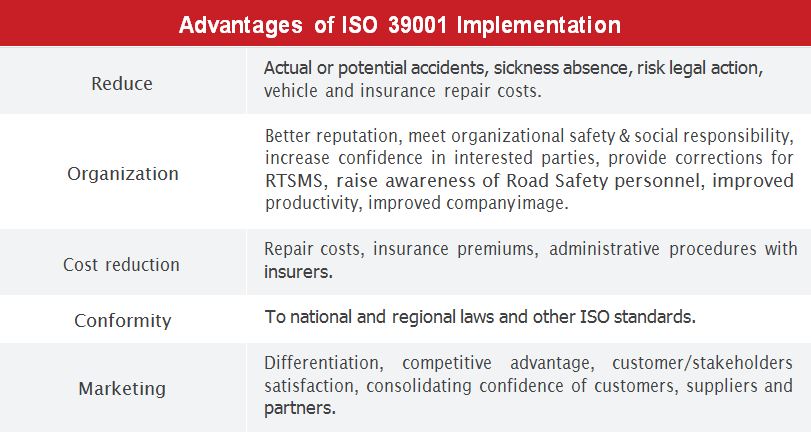Road deaths and injuries are a worldwide problem, and road traffic safety is an important aspect of life that should be discussed more often. The Global status report on road safety 2015 by WHO reveals that more than 1.2 million people die each year on the world’s roads, initiating road traffic accidents a leading cause of death worldwide. Also, confirming that 90% of road deaths occur in developing countries and that low-and middle income countries lose roughly 5% of GDP as a result of road traffic crashes. Another study done by the Department of Transport in Great Britain stated that there were 1,780 road deaths
in the year ending September 2015, which has increased by 3 per cent compared with the previous year.
According to the European Commission, Road Safety is a major societal issue. It states that in 2011 more than 30,000 people died on European Union roads, i.e. the equivalent of a medium town. For every death on Europe's roads, there is an estimated 4 permanently disabling injuries such as damage to the brain or spinal cord, 8 serious injuries and 50 minor injuries. An even more devastating fact reveals that for every 30 seconds someone is killed on a road crash and 50 million suffer moderate to severe injuries.
Significantly, World Bank & World Health Organization State Road safety should be addressed using a ‘systems approach’. The ISO 39001 standard is a road traffic safety (RTS) management system to help organizations reduce, and ultimately eliminate the incidence and risk of death and serious injuries related to road traffic crashes. Furthermore, according to the Secretary of ISO Peter Hartzell, this standard has been developed with the support of experts from 40 countries and 16 liaison organizations, including the World Health Organization, the World Bank, and the International Road Federation.
Fortunately, this standard can be applied by all types of organizations in various industries. No matter the product that is being produced or service being provided, as long as the organization has a process that includes the use of transportation or access to road traffic. In other words, as long as the organization is willing and able to improve road traffic safety by forming, implementing and maintaining a Road Traffic Safety Management System under the conformance of an RTS policy and the international standard. Regardless if the organization is government associated, a manufacturer allocating inventory, a delivery service, a car rental or a retail store. The ISO 39001 standard can be implemented to ensure that the transportation process is done safely in your communities’ roads. In addition, holding a Road Traffic System (RTS) certification proves to your community, clients, customers, suppliers, and partners that your organization has taken the required steps to ensure safe transport or use of the roads.
Implementing a road traffic system requires the organization or the project managers assisting the organization implementing the system to understand the system entirely. They must understand how the factors - roads, cars, heavy machinery, trucks, and road users - interact with the specific environment they are operating in and moving away from just focusing on the individual’s actions rather than road safety entirety. Furthermore, absorbing the relation between the economic, social and physical environment with the various elements of the road factors mentioned above allows room to pinpoint where there is prospective for contribution or engagement in specific road fragments.
Therefore, this focus can result in a more cost-effective use of the road traffic system in all countries, especially in developing countries. You can think of it as something similar to the “Green” culture that has been embedded globally if each individual has the decency to throw trash in bins or recycle then the world is less polluted and harmful with an economically balanced environment. Likewise, when various big or small organizations start to gradually implement a Road Traffic Safety management system in their communities in different countries, then the large number of traffic deaths and injuries along with the economic burden will reduce at a global level.
This system approach will make roads safer by making transport more sustainable and suitable, reflecting the needs of all road users, and creating safety through design. At the same time, providing safety in road traffic for pedestrians, road users, and children while progressively moving towards United Nation’s goal of preventing 5 million road traffic deaths by 2020.
That is why implementing an internationally recognized standard such as the ISO 39001 will not only show your commitment to a safer society, but also improve your efficacy and guide your continual improvement with several advantages.
Here at PECB, we highly emphasis on being a part of the improvement of road traffic safety worldwide and support organizations in providing their clients, partners or interested parties with confidence in the associated organization’s dedication to societies safety. PECB is a certification body for persons, management systems, and products on a wide range of international standards. As a global provider of training, examination, audit, and certification services, PECB offers its expertise on multiple fields, including ISO 39001 training and certification services.
ABOUT THE AUTHOR:
Arta Limani is an Account Manager for Quality Management Systems at PECB. She is in charge of conducting market research while developing and providing information related to Quality Management Systems at PECB. If you have any questions, please do not hesitate to contact: marketing.qms@pecb.com.



